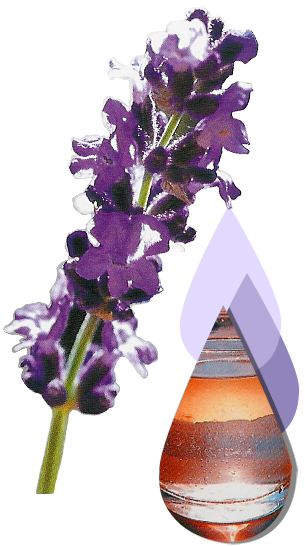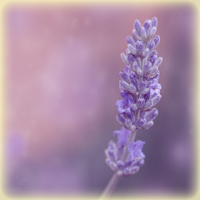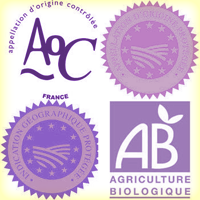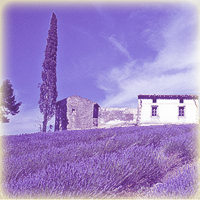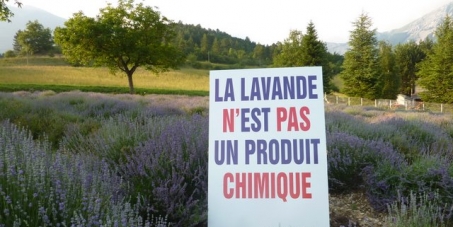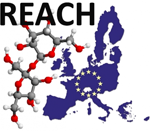REACH the producers' position
Current and / or planned regulations in Brussels (in italics) and our position as producers:
REACH : Essential oils are still considered to be industrial products, listed as "chemical products".
Any regulation turns on this misinterpretation. It is our farmers who grow lavender, harvest, and extract the essential oil by the use of water and steam in small agricultural distilleries. It is therefore an agricultural product!
REACH : It is the "distiller" who is said to "make" the essential oil.
For many thousands of years, it has been the plant which, by biosynthesis, manufactures this!
REACH : Pictograms which indicate that, for essential oil of lavender, the product
"can be deadly if swallowed or if breathed in (and even) toxic for aquatic organisms, may cause long-term adverse effects ..."
must be clearly marked on all packages (unless the suggested use is cooking!).
At first you might think this is just a bad joke! Indeed, since essential oil of lavender is considered non-toxic for cooking, how can it possibly be fatal if swallowed, if the label indicates another use?
As far as environmental dangers are concerned, it should be taken into account that over the course of thousands of years, thousands of tons of essential oil have been disseminated throughout the countryside by wild lavender fields! Have even the slightest traces been found in soils, in groundwater, or in rivers?
The essential oil of lavender, since it is lighter, does not mix with water and evaporates quickly, even when spread in great quantities. Is it really necessary to draw attention to the quality, universally recognized, of the air in our areas of production?
Research on the ecotoxicity of a natural, organic, product widely disseminated in the countryside, over a period of many thousands of years, without any pollution being discovered is a complete nonsense.
This seems nothing short of grotesque!
Our producers have repeatedly demonstrated their commitment to the respect of the environment and the protection of our friends, the bees. They continue in this vein, most notably by introducing and / or encouraging innovative programs for crop improvement and the fight against diseases.
So why impose these endless regulations and these insulting symbols?
REACH : Distilleries: recording (which is expensive) is required from the first ton of essential oil extracted (and will probably be imposed from the first kg, in the future). There is even a suggestion that "white areas" be established, according to the projected use of the essential oil.
This is required because the distilleries are classified as being chemical plants, which is absurd! These are all small units, used exclusively for the extraction of the essential oil. They operate for only a few days, sometimes a few dozen days a year and are then closed. Rules already exist to avoid any possible contamination. So what is the point in imposing this recording, which is expensive, cumbersome and inappropriate?
But if we do not agree to registration, we are told that we will not have the right to sell essential oil! We challenge these provisions which to us seem illegal! (See attached note from Bert CANDAELE - CRIEPP AM -).
REACH : In essential oils, natural ingredients classified as allergens, would, in Brussels’ terminology, increase from 26 to around 140!
Essential oil is very, very complex and cannot simply be reduced to the sum of its components, chemically manufactured and then tested separately!
REACH : The extremely low labeling thresholds imposed for consumer information (from 0.1% and even 0.01%, depending on the product) indicating the presence of allergens in commercialized products would become thresholds of prohibition for essential oil as a whole.
In the case where this would still be used, infinitesimal doses would only be authorized and therefore only for marketing purposes!
REACH : The same essential oil must be labeled differently according to its use (food, pharmaceutical, cosmetics, perfume, etc ...). It is forbidden to mention any other suggested use than the single proposition indicated on the bottle. For example, organic lavender essential oil, can only be used in cooking.
Since the dawn of time, essential oil has been multipurpose! It has always been used for its antiseptic, healing properties, to clean, to help relax ... and ... to perfume!
By what right should we be prohibited from referring to or quoting the different authors, with, of course, the information and warnings, that we already give to consumers?
Given all the excitement about our lavender and this determined campaign against it, we are entitled to ask what it is that people really want to defend.
We can also consider the cost of all this, in both money and energy and ask whether there might not be other priorities!
Read the complete file : dossier-reach.pdf
__________________________________________________________
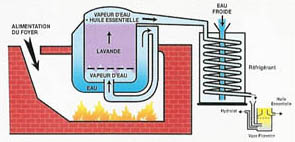 How it is essential oil obtained?
How it is essential oil obtained?
Lavender essential oils distilied from the plant by steam in a still. Totally natural, the resulting product is made by the multitude of aromatic molecules of the plant. Produce a liter of essential oil requires up to 200 kg of fresh flowers..
Important warnings about essential oils
If essential oils of lavender and hybrid lavender have been known for decades for their many virtues and properties, their use requires precautions.
Particular precautions:
- For any therapeutic use, ask your pharmacist or your doctor,
- Keep out of the reach of children,
- If swallowed, seek medical advice and show this container or label.
- Avoid contact with eyes
- Avoid direct contact with skin except prescription
- The essential oil 100% pure and natural contains linalol, limonene, geraniol, coumarin, which can trigger an allergic reaction,
- The essential oil of lavander and particularly hybrid lavender naturelly contain camphor and eucalyptol. Any use should be avoided in pregnant women and children under 6, except medical advice.
- ln cosmetics, the essential oils are used diluted in a base (sweet almond oil for example).
- Use an appropriate diffuser. Do not spray in unventilated room,
- When buying a lavender essential oil, make sure the label mentions the terme "essential oil" followed by the common name of the plant and variety. - The essential oils is 100% pure and natural obtained by steam extraction. - Also make sure that the label mentions ilnformatlon to help you use the product safely, and the address of manufacturer.
- Essentlal oils must be stored away from light and heat, in a tightly closed container. They should be used preferably within 24 months after opening.
* Principe de ditillation
